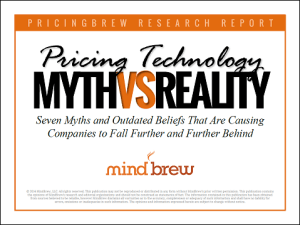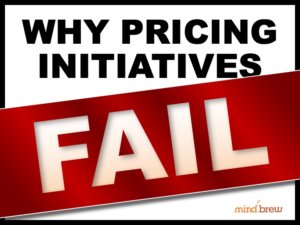On April 20, 2015, exactly eighty-one years after the publication of the most famous photo that claims to show the Loch Ness monster, Google added a new feature to its Street View maps that allows users to explore the Loch Ness from above and under the water. Thousands of computer users promptly began searching the images of the Scottish lake hoping to get a glimpse of “Nessie,” the elusive sea creature that is said to live there.
Believing—or pretending to believe—in a legend like the Loch Ness monster is generally harmless and fun. But the same can’t be said for people who continue to believe myths about pricing technology.
Pricing technology has advanced significantly in the past few years. If you haven’t taken a look at the solutions that are available today, you may have some mistaken beliefs about what these products can offer. Continuing to believe outdated “myths” about pricing technology could be very harmful to your business for several reasons:
- Pricing is much more transparent today than in the past. The Internet, the availability of research, and globalization are increasing pricing transparency for everyone. Your customers and your competitors probably know a lot about how you price your offerings, and that can give them an advantage in the marketplace. Pricing technology is one good way to even out the playing field.
- Some of your competitors are probably using pricing technology. In a PricingBrew survey, nearly half of B2B companies said they were using some type of pricing technology. These organizations are experiencing significant advantages in the market.
- Companies that use pricing technology experience less pricing pressure. The PricingBrew survey found that those who were using pricing technology were less likely to report that their company was experiencing pricing pressure. At least some of this benefit is likely due to pricing technology giving them a better understanding of their market and helping them to optimize their pricing strategy.
- B2B companies are looking for ways to maximize income. The Great Recession remains a fresh memory for most B2B companies, and they are focused on keeping their businesses as financially healthy as possible in case they have to weather another downturn. Pricing technology can help companies improve their efficiency and profitability.
So are you holding on to any outdated beliefs about pricing technology that could be holding you back? To find out, read the PricingBrew Research Report “Pricing Technology Myth Vs. Reality.” It details seven myths that are common among B2B companies.
That famous photo of “Nessie” turned out to be a hoax. Make sure you’re not falling for a lie that could be keeping your company from being as successful as it could be.














